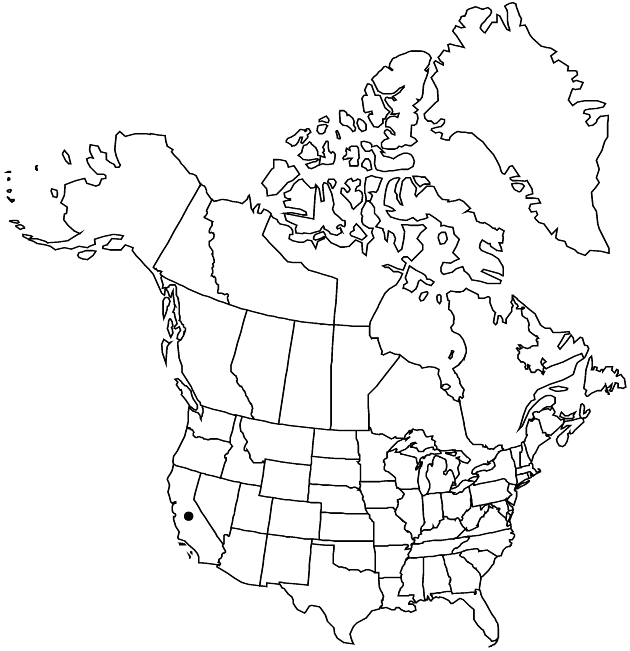Erigeron greenei
Sida 21: 28. 2004.
Common names: Greene’s narrow-leaf fleabane
EndemicConservation concern
Basionym: Erigeron angustatus (A. Gray) Greene Bull. Calif. Acad. Sci. 1: 88. 1885,
Perennials, 30–90 cm; taprooted, caudices simple or branches relatively short and slender, woody. Stems erect (arising from rootcrowns or caudex branches), glabrous, eglandular. Leaves mostly cauline; blades linear, 10–60 × 0.1–1 (–2) mm, barely reduced distally, margins entire, ciliate, faces glabrous, eglandular. Heads (discoid) 1 or 2–5 in loosely corymbiform arrays. Involucres 5.5–7.5 × 8–12 mm. Phyllaries in 3–5 series (apices purplish), glabrous, minutely glandular. Ray (pistillate) florets 0. Disc corollas 4.2–6 mm (throats slightly indurate, not inflated). Cypselae 2.4–2.8 mm, 2-nerved, faces sparsely strigose; pappi: outer of setae, inner of 26–38 bristles.
Phenology: Flowering May–Sep.
Habitat: Chaparral or open woods, ponderosa or jeffrey pine, Douglas fir, usually over serpentine, sometimes rocky alluvium
Elevation: (100–)500–1600 m
Discussion
Of conservation concern.
Selected References
None.
Lower Taxa
None.
... more about "Erigeron greenei"
introrse +
connate +
distinct +
herbaceous +
scarious +
hirsute +
papillate +
corymbiform +
continuous +
decurrent +
1-nerved +
linear;lanceolate oblanceolate or spatulate +
reduced +
ribbed +
slender +
stigmatic +
woody +
barbellate +
persistent +
26;38 +
absent +
simple +
Greene’s narrow-leaf fleabane +
absent +
2-nerved +
dimorphic +
2.4mm;2.8mm +
absent +
staminate +
Calif. +
straight +
eglandular +
distinct +
proximal +
1;5 +
bisexual +
dispersed +
Chaparral or open woods, ponderosa or jeffrey pine, Douglas fir, usually over serpentine, sometimes rocky alluvium +
indeterminate +
2;5 +
surrounding +
turbinate;hemispheric +
alternate +
cauline +
erect;spreading +
deltate +
2-carpellate +
inferior +
attached +
anatropous +
tough +
thick +
pistillate +
absent +
connate +
persistent +
distinct +
falling +
glabrous +
unequal +
equal +
Sida +
2004 +
pistillate +
absent +
fertile +
absent +
epaleate +
pitted +
flat;conic +
fibrous +
exalbuminous +
modifed +
3;5 +
stramineous +
persistent +
connate +
falling +
alternate +
eglandular +
erect +
glabrous +
deltate +
2-branched +
glabrous +
Erigeron greenei +
Erigeron +
species +
indurate +
shorter +
taprooted +
perennial +
